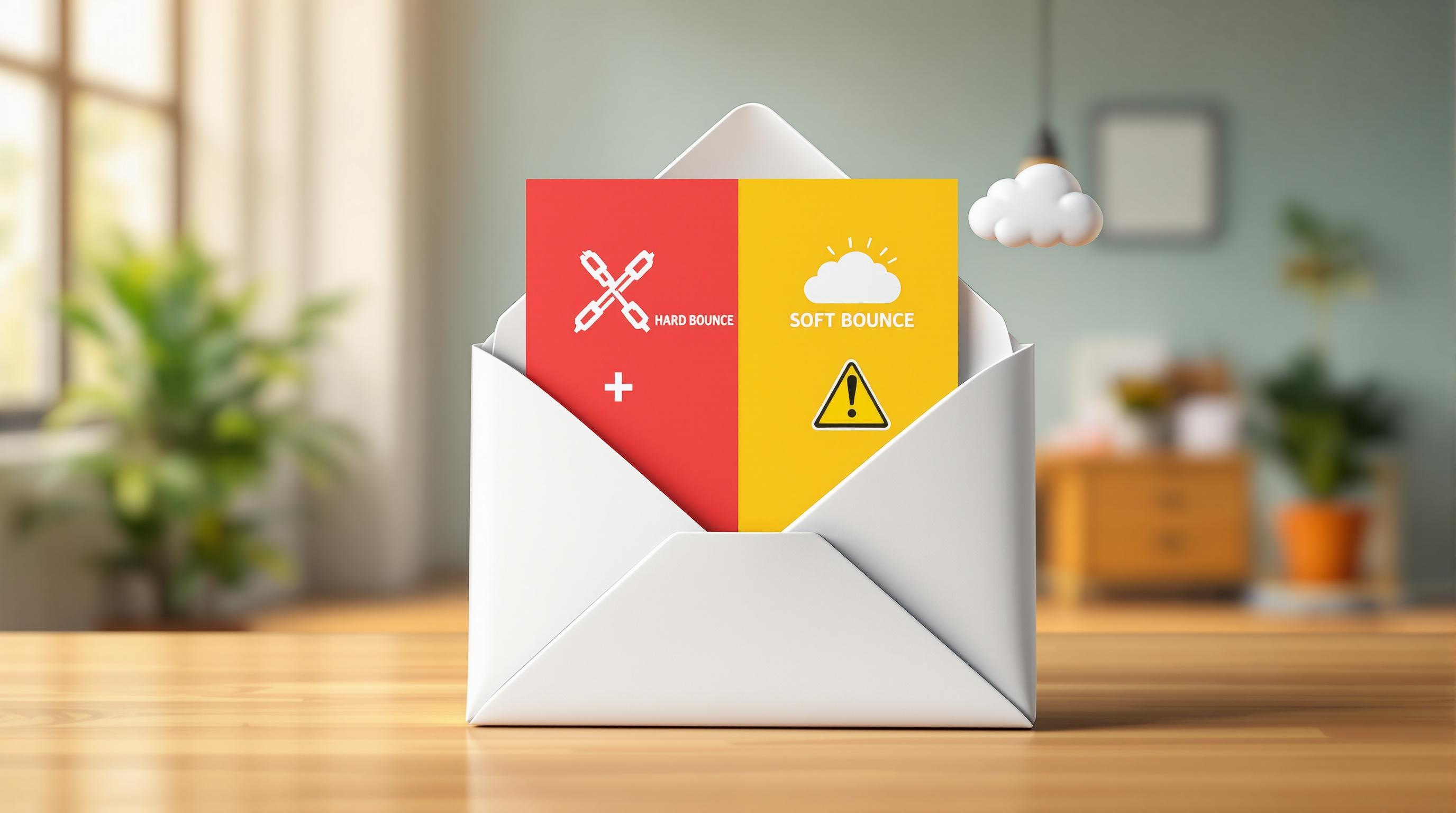Caching is a powerful way to make email platforms faster and more efficient. By storing frequently accessed data in memory or temporary storage, caching reduces the time it takes to process requests, load dashboards, or send email campaigns. Here's what you need to know:
- What is Latency? It's the delay between a user's action (like sending a campaign) and the platform's response. High latency slows down performance, while low latency ensures faster operations.
- How Caching Helps: Caching avoids repetitive database queries by storing data in quick-access memory, speeding up processes significantly.
- Key Caching Methods:
- In-Memory Caching: Stores data in RAM for lightning-fast access (e.g., user sessions, campaign stats).
- Database Query Caching: Saves results of common queries to avoid repeated database calls.
- Fragment Caching: Reuses parts of email templates to speed up dynamic content generation.
- Challenges: Real-time data like email engagement metrics require frequent updates, so balancing speed and accuracy is essential.
How Does Caching Improve Performance? - Next LVL Programming
Main Caching Methods for Faster Email Platforms
Email platforms rely on various caching techniques to minimize latency and enhance performance. Each method targets specific challenges, ensuring smoother user experiences and quicker response times.
In-Memory Caching
In-memory caching stores frequently accessed data directly in the server's RAM, allowing for lightning-fast retrieval. This method is ideal for keeping essential information - like user sessions, subscriber counts, and campaign statistics - readily available without repeatedly querying the database.
Tools like Redis and Memcached are widely used for in-memory caching in email platforms. For instance, when a user logs into their email dashboard, Redis can instantly provide campaign data, subscriber segments, and account settings, eliminating the need for multiple database calls.
The performance boost here is substantial. Accessing data from memory is far quicker than querying a database, especially during peak usage. This makes in-memory caching a go-to solution for managing user sessions and delivering real-time analytics, as it allows platforms to present updated statistics without recalculating complex data on the fly.
Next, let’s look at how caching database queries can further improve speed.
Database Query Caching
Database query caching focuses on storing the results of frequently executed or resource-intensive queries. Email platforms often generate repetitive queries for tasks like retrieving subscriber data, campaign history, or segmentation rules. Instead of re-running these queries, the system stores their results in a cache for quicker access.
Here’s how it works: the system keeps a temporary storage layer between the application and the database. The first time a query runs, the result is cached. When the same query is executed again, the cached result is returned, bypassing the database entirely.
This technique is particularly effective for complex operations like subscriber segmentation, which often involve multiple table joins. However, maintaining data accuracy is critical. When subscriber information changes or new campaign results are added, the system must refresh the relevant cached queries to ensure the data stays up-to-date.
Now, let’s explore fragment caching, which speeds up the assembly of dynamic email content.
Fragment Caching for Dynamic Content
Fragment caching breaks down email templates and dynamic content into smaller, reusable components that can be cached independently. While emails often include personalized elements, many parts - like headers, footers, social media links, or unsubscribe sections - remain consistent across campaigns.
By caching these static components, platforms can quickly assemble emails by combining pre-cached fragments with personalized content. For example, dynamic blocks like product recommendations or banners can be cached by category or audience segment. When generating emails, the system retrieves these fragments instead of recreating every element from scratch, significantly speeding up the process.
This approach shines in automated email sequences and triggered campaigns, such as welcome emails, abandoned cart reminders, or re-engagement messages. These campaigns often share similar structures with slight personalization, making fragment caching an efficient way to deploy them quickly while maintaining a tailored feel.
The benefits are especially noticeable during bulk email generation. Instead of processing every template element for thousands of recipients, platforms use pre-cached fragments to assemble emails rapidly, cutting down generation time dramatically.
However, managing cached fragments requires careful oversight. When template elements or dynamic content are updated, the system must refresh all related cached fragments to maintain consistency. Many email platforms address this by using content management systems that track dependencies and automatically update the cache as needed.
How to Implement Caching in Email Platforms
Implementing caching in email platforms involves finding the right balance between improving performance and maintaining data accuracy. To meet user demands effectively, caching methods need to be tailored based on duration settings, user roles, and specific operations.
Setting Cache Duration and Refresh Rules
The time-to-live (TTL) setting determines how long cached data remains valid before it needs to be refreshed. Choosing the right TTL depends on how frequently the data changes and how critical real-time accuracy is.
- Use moderate TTLs for session data.
- Apply longer TTLs for campaign statistics.
- Opt for shorter TTLs for real-time engagement metrics.
A good caching strategy often combines automatic and scheduled refreshes. For example, automatic invalidation clears cached data when triggered by specific events, like a subscriber updating their preferences. Scheduled invalidation, on the other hand, relies on TTL expiration to refresh data at regular intervals.
Some platforms also use cache warming techniques, where data is refreshed proactively before the cache expires. This ensures that users experience minimal delays, as the data is ready to serve when needed.
Customizing Cache Rules by User Type
Different users interact with email platforms in unique ways, so caching rules should be customized to fit their needs.
- Anonymous visitors browsing public pages, like signup forms, can benefit from aggressive caching with longer durations.
- Logged-in subscribers accessing dashboards need shorter caching intervals to reflect updates quickly.
- Platform administrators require near real-time data, with immediate refresh cycles for accuracy.
- API users benefit from predictable refresh schedules, ensuring consistent data formatting.
By implementing role-based caching layers, platforms can automatically apply the right caching rules based on a user’s authentication status or permissions. This approach helps maintain both speed and data accuracy.
Which Operations to Cache and Which to Skip
Not all operations should be cached. The decision depends on the nature of the action.
- Cache GET requests to improve performance, but avoid caching write operations to ensure data consistency.
- Search operations can be partially cached. Frequently used search terms or filters may be stored, but highly specific or personalized queries should always fetch fresh results.
- Authentication and session management require careful handling. For example, the initial login process should bypass caching to verify credentials, while session validation can use caching with shorter TTLs and robust security measures.
Real-time metrics, such as email open rates and click-through statistics, demand frequent updates. While historical data can be cached, current campaign metrics should refresh often, using cache invalidation triggered by live tracking events.
To streamline the process, platforms can assign predefined caching behaviors to each endpoint or function. This eliminates guesswork and ensures consistent performance. Adding cache bypass headers for critical operations also gives administrators the flexibility to access real-time data when necessary.
sbb-itb-6e7333f
Pros and Cons of Email Platform Caching
Building on the caching techniques we've discussed, let's dive into their trade-offs. While caching can significantly enhance an email platform's performance, it also presents challenges in maintaining up-to-date data. Balancing these aspects is key to meeting your platform's specific needs.
Comparing Different Caching Methods
Different caching methods come with their own strengths and weaknesses:
| Caching Method | Benefits | Limitations |
|---|---|---|
| In-Memory Caching | Delivers lightning-fast data retrieval and reduces database load, making it ideal for session data and user preferences. | Requires significant memory, risks data loss during server restarts, and scaling across servers can be complex. |
| Database Query Caching | Reduces database processing time and stores query results cost-effectively. It's persistent across server restarts and handles complex queries well. | Slower than in-memory caching, needs careful invalidation strategies, and struggles with frequent data updates. |
| Fragment Caching | Speeds up rendering of dynamic content like email templates and supports partial page updates while maintaining personalization. | Complex to implement, challenging to debug, and relies on advanced invalidation logic, which can lead to inconsistent experiences. |
In-memory caching is all about speed, but it comes at the cost of higher resource demands. It's a great choice for frequently accessed data like user preferences, but its reliance on server memory makes it less suitable for large-scale or distributed systems.
Database query caching, on the other hand, offers a more resource-efficient option. It's especially useful for data that doesn't change often, such as analytics or subscriber details. However, keeping the cache fresh requires careful planning of expiration policies to avoid outdated data.
Fragment caching shines when dealing with personalized content, such as email templates that combine static and user-specific elements. It enables faster delivery of customized dashboards or previews, though its complexity often calls for dedicated development resources.
Each method has its place, and understanding their trade-offs helps you choose the right one for your platform.
How Caching Affects Real-Time Data
While caching is great for performance, it can complicate real-time data updates. Metrics like open rates, click-throughs, and subscriber changes need to update frequently. Otherwise, outdated figures could lead to poor decisions or even compliance risks.
To tackle this, many platforms adopt hybrid caching strategies. For instance, historical data - like past campaign results - can be cached for longer periods, while current metrics are refreshed more often. In areas like A/B testing, platforms may bypass caching entirely or use very short cache durations to ensure statistical accuracy.
Some elements, such as navigation menus and email templates, benefit from caching because they don’t change often. On the other hand, transactional data - like recent email sends or immediate engagement responses - should usually skip caching to maintain accuracy.
Smart platforms also use cache invalidation triggers to keep data fresh. For example, if a subscriber clicks on a link, the system can immediately update the corresponding engagement data instead of waiting for the next refresh cycle. By tailoring caching durations to the timeliness needs of different data types, platforms can strike the right balance between speed and accuracy.
Best Practices for High-Performance Email Campaigns
Efficient caching strategies play a crucial role in maintaining scalable performance and ensuring data accuracy for high-volume email campaigns. When paired with the right operational practices, these methods can significantly improve platform efficiency.
Monitoring and Scaling Cache Systems
Keep a close eye on metrics like cache hit ratios, response times, and eviction rates. For better scalability and reliability, consider using distributed caching tools like Redis Cluster or Hazelcast, which allow you to spread data across multiple nodes. This setup supports horizontal scaling and enhances fault tolerance. To ensure uninterrupted availability, tools like Redis Sentinel can handle automatic failovers effectively. These technical measures should align with U.S. operational standards to maintain consistency and reliability.
Meeting U.S. Data Standards
It's essential to follow U.S. business standards to ensure clarity and compliance. For instance:
- Use U.S. number formatting: commas for thousands and periods for decimals.
- Stick to the MM/DD/YYYY date format.
- Clearly label time zones, using Eastern Time as a default or UTC timestamps when necessary.
- Format currency with dollar signs and proper spacing (e.g., $1,000.00).
- When relevant, use imperial units for measurements and Fahrenheit for temperatures.
Additionally, align cache retention and reporting practices with U.S. regulations like CAN-SPAM. Be mindful of regional differences in business hours, especially when managing East Coast and West Coast traffic, and plan cache refresh schedules accordingly. These adjustments ensure your email campaigns resonate with your U.S. audience while staying compliant.
Key Points About Caching for Email Platforms
Caching plays a key role in cutting down latency and improving performance in email marketing platforms. By storing frequently accessed data in faster storage, it significantly reduces campaign delivery times and creates a smoother user experience.
There are three main caching methods that help email platforms perform better: in-memory caching, database query caching, and fragment caching. Each method is designed to tackle specific performance challenges, such as managing user sessions or assembling dynamic content efficiently. Together, these approaches address various optimization needs for email systems.
The effectiveness of caching depends on fine-tuning cache rules and refresh intervals for different user types. It’s crucial to pinpoint which operations gain the most from caching while steering clear of caching real-time elements like live inventory updates or time-sensitive promo codes.
Beyond the initial setup, maintaining high performance requires regular monitoring. As email volumes increase, scalable distributed caching becomes vital to keep up with demand and ensure smooth operations.
For businesses aiming to enhance their email marketing performance, a thoughtfully designed caching strategy can dramatically cut email delivery times and support larger campaign volumes. The Email Service Business Directory (https://emailservicebusiness.com) offers a resource to explore email marketing platforms equipped with advanced caching technologies tailored to meet specific performance needs and scale alongside business growth.
When properly implemented, these caching techniques transform sluggish, resource-heavy email processes into efficient workflows, benefiting both marketers and their audiences.
FAQs
How does caching affect the accuracy of real-time email engagement metrics?
Caching can interfere with the accuracy of real-time email engagement metrics, especially open rates. This happens because cached images or data might not capture the latest user interactions. For instance, when tracking pixels are used in emails, caching can delay updates, making the reported data less reliable.
This issue tends to affect open rates the most, as they are particularly vulnerable to caching problems. To work around this, many marketers shift their attention to other engagement metrics, like click-through rates. These metrics are usually less impacted by caching and offer a clearer picture of how users are interacting with email content.
How can I determine the best cache duration for different types of data in an email platform?
To figure out the best cache duration, start by looking at the type of data and how often it changes. For content that doesn’t change often - like images or templates - longer cache durations can boost performance and lighten the load on your servers. On the other hand, for data that updates frequently, such as user settings or real-time analytics, shorter cache durations help keep everything accurate and responsive.
You’ll also want to think about the specific needs of your email platform. It’s all about finding the right balance between efficient performance and keeping your data current. Keeping an eye on performance metrics regularly can help you adjust your cache settings to get the best results for your specific scenario.
How do email platforms maintain accurate and consistent data when using caching methods like in-memory or database query caching?
Email platforms can keep their data accurate and consistent by using smart cache management strategies. For instance, write-through caching updates data in both the cache and the main database at the same time, ensuring everything stays in sync. To avoid serving outdated information, platforms can implement cache expiration policies and set up periodic refresh systems.
On top of that, running validation checks helps verify the integrity of the cached data. By blending these techniques, platforms can achieve faster performance while maintaining dependable and reliable data.


